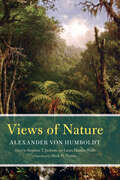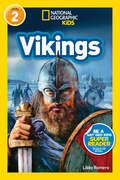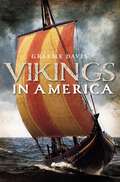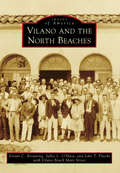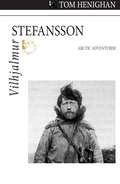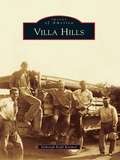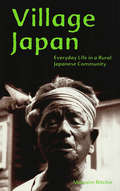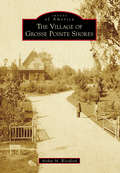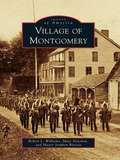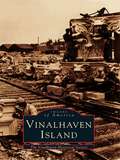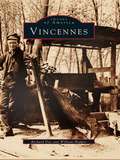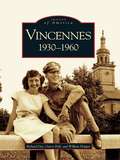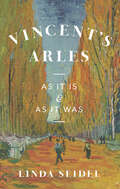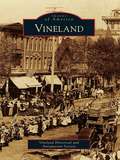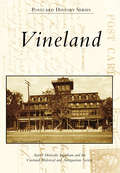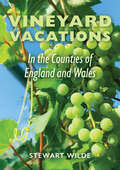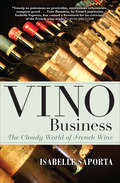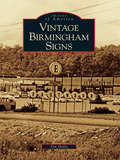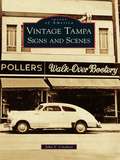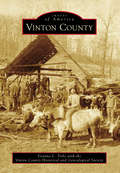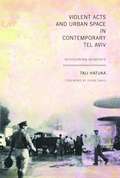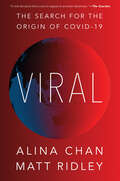- Table View
- List View
Views of Nature
by Laura Dassow Walls Alexander Von Humboldt translated by Mark W. Person edited by Stephen T. JacksonPurchase of this book includes free trial access to www. million-books. com where you can read more than a million books for free. This is an OCR edition with typos. Excerpt from book: Modern views on the mountain systems of the two American peninsulas. Chains, which have a direction from S. W. to N. E. , in Brazil and in the Atlantic portion of the United States of North America. Depression of the Province of Chiquitos; ridges as watermarks between the Guapor6 and Aguapehi in 15 and 17 south lat. , and between the fluvial districts of the Orinoco and Eio Negro in 2 and 3 north lat. ?pp. 29-31. Continuation of the Andes-chain north of the isthmus of PanamS through the territory of the Aztecs, (where the Popocatepetl, recently ascended by Capt. Stone, rises to an altitude of 17,720 feet, ) and through the Crane and Rocky Mountains. Valuable scientific investigations of Capt. Fremont. The greatest barometric levelling ever accomplished, representing a profile of the ground over 28 of longitude. Culminating point of the route from the coast of the Atlantic to the South Sea. The South Pass southward of the Wind-River Mountains. Swelling of the ground in the Great Basin. Long disputed existence of Lake Timpanogos. Coast-chain, Maritime Alps, Sierra Nevada of California. Volcanic eruptions. Cataracts of the Columbia River?pp. 31-38. General considerations on the contrast between the configuration of the territorial spaces, presented by the two diverging coast-chains, east and west of the central chain, called the Rocky Mountains. Hypsometric constitution of the Eastern Lowland, which is only from 400 to somewhat more than 600 feet above the level of the sea, and of the arid uninhabited plateau of the Great Basin, from 5000 to more than 6000 feet high. Sources of the Mississippi in Lake Istaca according to Nicollet, whose labours are most meritorious. Native land of the Bisons; their ancient domestication in Northern Mexico asserted by Gomara?pp. 38-42. Retrospectiv. .
Vikings (Readers)
by Libby RomeroMeet the seafaring adventurers, storytellers, and famous figures of Norse history in this new Leveled Reader, perfect for independent readers and kids who love learning about ancient cultures.Learn how the Vikings lived, worked, and played (...and pillaged!). Explore the rich history, culture, mythology and newest findings of the ever interesting Viking world. National Geographic Readers' expert-vetted text, along with brilliant images and a fun approach to reading have proved to be a winning formula with kids, parents and educators. Level 2 text provides accessible, yet wide-ranging, information for kids ready to read on their own. Each reader includes text written by an experienced, skilled children's books author, a photo glossary, and interactive features in which kids get to reinforce what they've learned in the book.
Vikings in America
by Graeme DavisDiscover the evidence that Vikings walked on American soil—centuries before Columbus. When Columbus claimed to have discovered America in 1492 and the Borgia pope declared it a New World for Catholic Spain, the Vatican started a five-hundred-year conspiracy to conceal the true story of Viking America. In this groundbreaking new work by the author of The Early English Settlement of Orkney and Shetland, the true extent of the Viking discovery and colonization of the eastern seaboard of North America is fully examined, taking into account the new archaeological, linguistic, and DNA evidence that supplements the historic account. For four centuries or more, from their first visits around AD 1000 to the eve of the Columbus voyages, the Vikings explored and settled thousands of miles of the coasts and rivers of North America. From New York&’s Long Island to the Canadian High Arctic, the New World was a playground for Viking adventurers. And, he argues, the name the Vikings gave to this New World was America.
Vilano and the North Beaches
by John T. Pilecki Sallie L. O’hara Vilano Beach Main Street Vivian C. BrowningVilano and the North Beaches are perhaps most known as small, eclectic beach communities within sight of St. Augustine, the nation's oldest city. For centuries, people have flocked to this coastal playground by horse-drawn trolley, ferry, and more recently Florida's Coastal Highway, State Road A1A. They came for recreation, jobs, and sunny weather in the late 1800s, when Henry Flagler attracted Northerners to his "new and novel" hotels. Visitors were excited to learn the ocean was just across the bay. Tourism provided jobs for settlers, like the Minorcan, Usina, and Capo families, offering fun excursions. Nowhere else were horse-drawn trolleys delivering beachgoers across sand dunes to the sea. Like Ponce de León, who was smitten with the pristine beaches, the area's story is one of developing the land along an isolated coastline. Road and bridge construction after World War II encouraged migration as well as visitors to the beaches, fish camps, and Art Deco motor courts. This nostalgic 1950s look remains today, attracting those curious about the region's multicultural history.
Vilhjalmur Stefansson: Arctic Adventurer
by Tom HenighanBorn in Manitoba of Icelandic parents, Vilhjalmur Stefansson (1879-1962) became one of Canada’s most famous and controversial Arctic explorers. After graduate studies in anthropology at Harvard University, Stefansson lived with and studied Inuit in the Mackenzie River Delta in the Northwest Territories in the winter of 1906-07. In two subsequent expeditions he completed a major anthropological survey of the Central and Western Arctic coasts and islands of North America; located and lived with the Copper Inuit, a previously unknown group of aboriginal people; and discovered the world’s last major land masses. During his third and final great Arctic expedition from 1913 to 1918, some of Stefansson’s men perished tragically, an outcome that severely damaged his reputation. Nevertheless, the hardy explorer contributed immensely to knowledge about the Far North, particularly in his championing of the "Friendly Arctic." Part scientist, part showman, Vilhjalmur Stefansson was truly unique among polar adventurers.
Villa Hills (Images of America)
by Deborah Kohl KremerAlthough the small town of Villa Hills was incorporated into a sixth-class city in 1962, the area where the city sits was home to luscious farmland dating back to the time when Kentucky was still part of Virginia. The development of Villa Hills is the story of the birth of a suburb. It is the perfect example of population sprawling away from the larger cities, as people looked for a more rural setting to raise their families. In the late 1950s, what they found was unincorporated Kenton County, bounded by the tiny town of Crescent Springs and the Ohio River. At this pivotal time in the area's history, farmers were beginning to sell their land and builders were breaking ground on three-bedroom ranch homes and four-bedroom two stories. Images of America: Villa Hills presents the history of the farmers who worked the land, the Benedictine sisters who established a monastery, and the young families who worked together to build the city now known as Villa Hills.
Village Japan
by Malcolm RitchieIn this elegiac account that is part travelogue, part memoir, British poet and writer Malcolm Ritchie recounts his and his wife's unforgettable three-year-sojourn in Sora, a remote farming and fishing village on the Japan Sea coast. Ritchie weaves together anecdotes, conversations, lyrical verses, and unforgettable character studies to vividly and hauntingly evoke the rhythms of life in a traditional rural Japanese community. Underlying this portrait is the author's growing awareness that the aged inhabitants of Sora and the surrounding villages are the custodians of a fragile, barely surviving, way of life, one that is still informed by the cadences of the natural world, under the tutelage of its ancient gods. The book is a paean to a once noble culture all but effaced by Western industrial/technological materialism-the "cultural carcinogens" of the West-which Asian countries such as Japan have all too willingly embraced. Always profound and moving, Village Japan pays lyrical homage to a side of Japan rarely experienced or glimpsed by foreigners today.
Village Japan
by Malcolm RitchieIn this elegiac account that is part travelogue, part memoir, British poet and writer Malcolm Ritchie recounts his and his wife's unforgettable three-year-sojourn in Sora, a remote farming and fishing village on the Japan Sea coast. Ritchie weaves together anecdotes, conversations, lyrical verses, and unforgettable character studies to vividly and hauntingly evoke the rhythms of life in a traditional rural Japanese community. Underlying this portrait is the author's growing awareness that the aged inhabitants of Sora and the surrounding villages are the custodians of a fragile, barely surviving, way of life, one that is still informed by the cadences of the natural world, under the tutelage of its ancient gods. The book is a paean to a once noble culture all but effaced by Western industrial/technological materialism-the "cultural carcinogens" of the West-which Asian countries such as Japan have all too willingly embraced. Always profound and moving, Village Japan pays lyrical homage to a side of Japan rarely experienced or glimpsed by foreigners today.
Village of Grosse Pointe Shores, The
by Arthur M. WoodfordThe Village of Grosse Pointe Shores, nestled along the shore of Lake St. Clair just north of Detroit, is the smallest of the five Grosse Pointe communities. After the settlement of Detroit in 1701, the area that would become Grosse Pointe Shores saw the arrival of French habitants who built their ribbon farms. Beginning in the 1860s, the area began to change as well-to-do Detroiters erected summer homes on the lakeshore. The Village of Grosse Pointe Shores was formally established in 1911, and the community grew as great mansions were built along Lake Shore Road. Following World War II, the community evolved yet again as the grand mansions disappeared and properties were subdivided. By the end of the 20th century, the village had grown into an established community of comfortable, well-maintained homes. In 2011, these residents gathered together to celebrate the 100th anniversary of their community.
Village of Montgomery (Images of America)
by Robert L. Williams Marc Newman Mayor Stephen BresciaNoted for its picturesque historic districts and venerable homes, the village of Montgomery is nestled into northern Orange County, bounded by the Wallkill River in the shadow of the Comfort Hills. Filled with rare photographs dating from the 1870s to the present, Village of Montgomery focuses on the history of the hamlet and its churches, roads, businesses, schools, and cemeteries, providing insight into how village residents lived, worked, and played in years past. The insightful text accompanying each photograph reveals intriguing and little-known facts about the village and its people.
Vinalhaven Island (Images of America)
by The Vinalhaven Historical SocietyLocated in Penobscot Bay, Vinalhaven Island is a land mass about 10 by 5 miles, with the town situated on Carvers' Harbor, 15 miles from the mainland. Always a working community, Vinalhaven presently serves as one of the largest lobstering centers in the world. Islanders, summer residents, visitors, and other interested persons on the mainland and elsewhere are invited to partake of this striking photographic record of the island as it was between 1860 and 1960. Contained within are classic views that bring to life the island's ongoing fishing and granite industries. Some show the enormous columns for the Cathedral of St. John the Divine in New York City being cut and polished; others document the carving of the eagles for the Buffalo, NY, Post Office. Lesser-known occupations are portrayed as well, like the making of horse nets, which employed many women. Readers are given the rare opportunity to meet such people as granite company operator Moses Webster; Joseph Bodwell (a Maine governor); Edward Russell (from Ireland) and Joseph Black (from Scotland); and O.P. Lyons, founder of the first local newspaper and band.
Vincennes
by Richard Day William HopperAs Indiana's oldest town, Vincennes has a richly textured and multifaceted history. Established in 1732 as a military and fur-trading post, it grew to become the cultural, political, and educational center of the Indiana Territory in the early 1800s. Illustrated with over two hundred picture postcards and rare photographs, Vincennes offers a unique view of life in this historic community on the banks of the Wabash River. This unprecedented collection creates a retrospective of Vincennes's history from the early 1900s through the 1960s. Vincennes serves as a kind of time machine for its readers, enabling them to experience the sights and structures of yesteryear. The book's lively commentary combines the images with colorful anecdotes, making this book both entertaining and educational. From photographs documenting its landscape--picturesque views of downtown and shots of Fort Knox and the Clark Memorial--to evocative portraits of townspeople at work and play--at Beesley Grocery or the Pantheon Theatre--this fascinating collection will give older readers a chance to walk Vincennes's streets again, and younger readers a chance to appreciate their rich heritage.
Vincennes: 1930-1960
by Richard Day William Hopper Garry HallAs the first and oldest town in Indiana, Vincennes is rich in history. It had an important role in the American Revolution and later was the capital of the Indiana Territory. This book focuses on a more recent time, the years between 1930 and 1960--the period of the Great Depression, the New Deal, World War II, and the post-war years. Fascinating views of stores, clubs, theaters, churches, factories, groceries, and gas stations, many of which are gone or greatly changed, are captured in Vincennes: 1930-1960. Some events in Vincennes remain the same, such as the Fourth of July fireworks display at the Clark Memorial and the high-school homecoming parade, and these images are displayed within these pages as well.
Vincent's Arles: As It Is and as It Was
by Linda SeidelA vivid tour of the town of Arles, guided by one of its most famous visitors: Vincent van Gogh. Once admired as “a little Rome” on the banks of the Rhône, the town of Arles in the south of France had been a place of significance long before the painter Vincent van Gogh arrived in February of 1888. Aware of Arles’s history as a haven for poets, van Gogh spent an intense fifteen months there, scouring the city’s streets and surroundings in search of subjects to paint when he wasn’t thinking about other places or lamenting his woeful circumstances. In Vincent’s Arles, Linda Seidel serves as a guide to the mysterious and culturally rich town of Arles, taking us to the places immortalized by van Gogh and cherished by innumerable visitors and pilgrims. Drawing on her extensive expertise on the region and the medieval world, Seidel presents Arles then and now as seen by a walker, visiting sites old and new. Roman, Romanesque, and contemporary structures come alive with the help of the letters the artist wrote while in Arles. The result is the perfect blend of history, art, and travel, a chance to visit a lost past and its lingering, often beautiful, traces in the present.
Vincent's Arles: As It Is and as It Was
by Linda SeidelA vivid tour of the town of Arles, guided by one of its most famous visitors: Vincent van Gogh. Once admired as “a little Rome” on the banks of the Rhône, the town of Arles in the south of France had been a place of significance long before the painter Vincent van Gogh arrived in February of 1888. Aware of Arles’s history as a haven for poets, van Gogh spent an intense fifteen months there, scouring the city’s streets and surroundings in search of subjects to paint when he wasn’t thinking about other places or lamenting his woeful circumstances. In Vincent’s Arles, Linda Seidel serves as a guide to the mysterious and culturally rich town of Arles, taking us to the places immortalized by van Gogh and cherished by innumerable visitors and pilgrims. Drawing on her extensive expertise on the region and the medieval world, Seidel presents Arles then and now as seen by a walker, visiting sites old and new. Roman, Romanesque, and contemporary structures come alive with the help of the letters the artist wrote while in Arles. The result is the perfect blend of history, art, and travel, a chance to visit a lost past and its lingering, often beautiful, traces in the present.
Vineland
by Vineland Historical and Antiquarian SocietyIn the mid-1800s, Charles K. Landis, a visionary and entrepreneur, was looking for land that would be more adaptable to fruit than to grain and suitable also for a wide range of industries. In 1861, Landis developed a parcel of land just north of Millville. Landis set aside 1 square mile called the Borough of Vineland exclusively for homes, businesses, and industry. Beyond that 1 square mile, the land was designated for farming and became Landis Township. In 1952, the citizens of the borough and township voted to merge the two into the City of Vineland, which today remains the largest city in area in New Jersey. Known for its cultural and religious diversity, Vineland's success in farming, business, and industry can be traced to its unique blend of early settlers, natives, and immigrants alike.
Vineland (Postcard History Series)
by Vineland Historical and Antiquarian Society Arjorie Moniodis IngrahamIn 1861, Charles K. Landis carved the village of Vineland from the western edge of the Pine Barrens. The community quickly attracted a diverse population who farmed and manufactured. A network of railroads enabled the town to ship its produce and products to markets along the East Coast. Vineland was recognized as a cultural mecca as well as a center of civil rights and women's suffrage. Physically the largest "small town" in New Jersey in square miles, Vineland today still attracts newcomers in search of new opportunities, just as Landis hoped for all those years ago.
Vineyard Vacations - In The Counties of England and Wales
by Stewart WildeTravelling through the vineyards of England and Wales? Dive into an experience where you sip fine wines and rest without a care about the drive home. From hidden gems offering quaint B&Bs to those with chic glamping sites, this guide will introduce you to unique stays right in the heart of wine country. While it’s not exhaustive, it’s ever-evolving: each year adds fresh vineyards expanding their horizons. And as new terrains are cultivated, expect to taste wines echoing the distinct essence of their English and Welsh regions. So, let your adventure begin – where the road is lined with vines, and every turn promises a new discovery.
Vino Business: The Cloudy World of French Wine
by Isabelle SaportaAlready provoking debate and garnering significant attention in France and within the wine world, Vino Business is a surprising and eye-opening book about the dark side of French wine, by acclaimed investigative journalist Isabelle Saporta. While Bordeaux has been a bastion of winemaking tradition and excellence for centuries, in recent decades the industry has changed dramatically under the influence of large-scale international investors. French insurance companies, international fashion houses and Chinese businessmen are all speculating on the area’s wines and land, some of whose value has increased tenfold in the last decade alone. Saporta investigates in detail the 2012 classification of the wines of Saint-Émilion, the most prestigious appellation of Bordeaux’s right bank, which has come into disrepute, not least because the scoring system was changed in order to give points for a châteaux’s lecture facilities and the size of its parking lot. A shocking exposé of the French wine world, and a cri de coeur for the lost values of traditional winemaking, Vino Business pulls back the curtain on the secret domain of Bordeaux, a land ever more in thrall to the grapes of wealth.
Vintage Birmingham Signs
by Tim HollisMost people do not stop to realize how many of their fond memories involve advertising signs. Although these neon spectaculars, billboards, and even signs painted directly onto brick walls were created expressly to persuade customers to buy products or patronize businesses, many such signs remained in place for so long that they became beloved landmarks in their own right. For Images of America: Vintage Birmingham Signs, Tim Hollis has scoured the archives of Birmingham's former sign companies, as well as other private collections, to compile some of the best remembered or most obscure signs that dotted the urban and suburban landscape. Here readers will again see the Buffalo Rock bottle pouring its ginger ale into a glass, the Golden Flake clown smiling down at passersby, the Barber's milk clock at the Five Points South intersection, and many more. Through these vintage photographs, readers can once again visit such once-thriving destinations as Eastwood Mall, Burger in a Hurry, and the Kiddieland amusement park.
Vintage Camper Trailer Rallies
by Paul Lacitinola Caroline LacitinolaA celebration of vintage midcentury trailers and the people that love them. This follow-up to the authors&’ Vintage Camper Trailers focuses on trailer rallies, events where hundreds of vintage trailers aficionados come together to show off their trailers and share their love of the hobby. It features hundreds of new photos of trailerites and their trailers, along with the fun and festivities that occur at the rallies. Also included are a history of camper trailers, along with information on the major trailer hobby groups, such as Tin Can Tourists, the Wally Byam Airstream Club, and Sisters on the Fly, and tips on how to plan and organize your own rallies and events, based on the authors&’ own first-hand experience.
Vintage Tampa Signs and Scenes
by John V. CinchettDuring the 1950s, the Cinchett Neon Sign Company came to be Tampa's best-known sign maker. When the city planned to build a zoo, the mayor asked Cinchett to design the new sign. Fried chicken king Colonel Sanders had the sign company create all the neon work for his first two Kentucky Fried Chicken restaurants in Central Florida, and soon after, other reputable businesses came calling.
Vinton County
by Deanna L. Tribe Vinton County Historical and Genealogical SocietyWhen Ohio became a state in 1803, settlement of what would become Vinton County had hardly begun. Largely forested then and now, Vinton was carved out of the five adjacent counties and in 1850 became the second-to-last county established in Ohio. McArthur, which later became the county seat with a population of 424, was laid out as the village of McArthurstown in 1815; the village celebrates its bicentennial in 2015, having grown to about 1,700 residents. Although rural in manner, life, and outlook, Vinton Countians have maintained a strong sense of community through both good and bad times in this part of Ohio Appalachia. Images of America: Vinton County features images from the Vinton County Historical and Genealogical Society and photograph collections shared by residents. This book presents a snapshot of the county's history, heritage, and culture--a story seldom presented in print.
Violent Acts And Urban Space In Contemporary Tel Aviv
by Tali HatukaViolent acts over the past fifteen years have profoundly altered civil rituals, cultural identity, and the meaning of place in Tel Aviv. Three events in particular have shed light on the global rule of urban space in the struggle for territory, resources, and power: the assassination of Prime Minister Rabin in 1995 in the city council square; the suicidal bombing at the Dolphinarium Discothèque along the shoreline in 2001; and bombings in the Neve Shaanan neighbourhood in 2003. Tali Hatuka uses an interdisciplinary framework of urban theory and socio-political theory to shed light on the discourse regarding violent events to include an analysis of the physical space where these events take place. She exposes the complex relationships among local groups, the state, and the city, challenging the national discourse by offering a fresh interpretation of contesting forces and their effect on the urban environment. Perhaps the most valuable contribution of this book is its critical assessment of the current Israeli reality, which is affected by violent events that continually alter the everyday life of its citizens. Although these events have been widely publicized by the media, there is scant literature focusing on their impact on the urban spaces where people live and meet. In addition, Hatuka shows how socio-political events become crucial defining moments in contemporary lived experience, allowing us to examine universal questions about the way democracy, ideology, and memory are manifested in the city.
Viral: The Search for the Origin of Covid-19
by Matt Ridley Alina Chan"Chan and Ridley write with an urgency...that inspires gripping depictions of what viruses are, how infectious-disease laboratories work and wonderfully lucid descriptions of bats. . . . They powerfully recount how dangerous pathogens can both leak from a lab and emerge in nature." (New York Times Book Review) Understanding how Covid-19 started is crucial for the future of humankind. Viral is the most incisive and authoritative book about the search for the source of the virus.A new virus descended on the human species in 2019 wreaking unprecedented havoc. Finding out where it came from and how it first jumped into people is an urgent priority, but early expectations that this would prove an easy question to answer have been dashed. Nearly two years into the pandemic, the crucial mystery of the origin of SARS-CoV-2 is not only unresolved but has deepened. In this uniquely insightful book, a scientist and a writer join forces to try to get to the bottom of how a virus whose closest relations live in bats in subtropical southern China somehow managed to begin spreading among people more than 1,500 kilometres away in the city of Wuhan. They grapple with the baffling fact that the virus left none of the expected traces that such outbreaks usually create: no infected market animals or wildlife, no chains of early cases in travellers to the city, no smouldering epidemic in a rural area, no rapid adaptation of the virus to its new host—human beings. To try to solve this pressing mystery, Viral delves deep into the events of 2019 leading up to 2021, the details of what went on in animal markets and virology laboratories, the records and data hidden from sight within archived Chinese theses and websites, and the clues that can be coaxed from the very text of the virus’s own genetic code. The result is a gripping detective story that takes the reader deeper and deeper into a metaphorical cave of mystery. One by one the authors explore promising tunnels only to show that they are blind alleys, until, miles beneath the surface, they find themselves tantalisingly close to a shaft that leads to the light.
